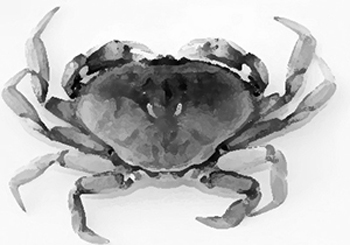Dungeness Crab Hit by Algae Bloom

West Coast dungeness crab fishermen have been dealing with a large and extended algae bloom that has stalled the fishing season. The bloom, like the northeast’s so-called red tides, produces a toxin. That toxin, domoic acid, falls to the bottom, is eaten by the crabs and will sicken humans eating the crabs. It is a naturally occurring event which cooler water reduces and flushes from the crabs. The state does two domoic acid tests 10 days apart before reopening the fishery.
Last year a lot of warm water and El Nino-driven weather patterns meant a lot of domoic acid and closures from Washington to California. Oregon’s crab season opened a few weeks late on January 1, 2016, while California is still closed. This is not an annual event. “The last big one,” said 40-year veteran Oregon fisherman Mark Newell, “was 20 years ago. This past year fishermen were seeing tropical species coming into the northwest, which included swordfish and sunfish.” Newell fishes dungeness in the winter and black cod, tuna and salmon in the summer months from his 48' boat.
Warm water is impacting other fisheries there. “A temperature increase of just a few degrees can have a significant impact,” said Newell. Most of the salmon smolt were lost to warm water in the rivers. The salmon spend up to six months in the river before swimming out to sea. But the water has been too warm and they didn’t survive.
Henry de Ronden-Pos, a 3rd generation fisherman out of Newport, Oregon, said he has seen many cycles and changing conditions in the ocean, noting closures in 2002. Recently there have been very large numbers of jellyfish. “They are taking over,” said Ronden-Pos. Since the season opened on January 4 the crabbing has been good and the prices stable at $2.90/lb. He also fishes abalone and salmon in the warmer months.
There are 325 licensed crab fishermen in Oregon with a total of about 1,000 licensed crab fishermen from Washington, Oregon and California combined. Crab fishermen’s trap limits are based on one of three tiers—200, 300 or 500 pots. Most fish a 300-pot limit permit. Newell said he fishes 500 pots based somewhat on his having done it for 30 years, The limits came into effect 8 years ago. Prior to that there were no limits. The resource is strong, said Newell. There is a shell measure like the American lobster carapace measure required. Most legal crabs are about 2 lbs. and measure 6 1/4" across.
The 80 lb. to 150 lb. crab traps are about 40" in diameter by 12 to 18 inches deep. They use a cotton link that rots out in 3 months, which opens lost traps and stops them from fishing. They are fished in 20 to 100 pot trawls.
